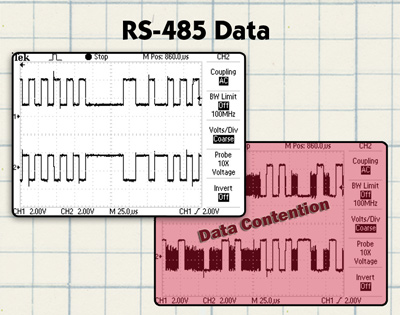White Paper: Eliminate the Risk of RS-485 Data Corruption
By: Earle Foster and Jeff Hunter
How-To Overcome the Perils of Moving Data via RS-485
I. Background and Objective
The RS-485 communications standard was introduced in 1983 by the Electronic Industries Alliance (EIA) as a two-wire, half-duplex, multi-drop alternative to the point-to-point RS-232 interface. (Note: RS-485 can also be wired using 4-wires to enable full-duplex communication). RS-485 uses differential signaling to allow up to 32 devices to communicate peer to peer at distances up to 4000 feet. However, the EIA RS-485 specification does not stipulate the method for controlling the driver, therefore a number of alternatives have evolved.
Learn which method is most effective for minimizing the risk of communication errors in our “Eliminate the Risk of RS-485 Data Corruption” White Paper. Download the file — a 138kb printer-friendly PDF — below.

Categories:
